Veve
A Veve (spelled Vévé or Vevé in Latin America) is a religious symbol commonly used in Vodou and Palo. It acts as a "beacon" for the Loa, and will serve as a loa's representation during rituals.
History
The origin is unknown, though it is believed that the veve was derived from the beliefs of the Indigenous Taíno people. However, it may descend from the cosmogram of the Kongo people; or originated as the Nsibidi system of writing for the Igboid and Ekoid languages.
Function
According to Milo Rigaud "The veves represent figures of the astral forces... In the course of Vodou ceremonies, the reproduction of the astral forces represented by the veves obliges the loas... to descend to earth." [1]
Every Loa has his or her own unique veve, although regional differences have led to different veves for the same loa in some cases. Sacrifices and offerings are usually placed upon them, with food and drink being most commonly used.
Presentation
In ritual and other formalities, veve is usually drawn on the floor by strewing a powder-like substance, commonly cornmeal, wheat flour, bark, red brick powder, or gunpowder, though the material depends entirely upon the ritual. In Haitian Vodou, a mixture of cornmeal and wood ash is used.
Veve can be made into screenprint, painting, patchwork etc., as wall hangings, artworks, and banners.
Examples
-
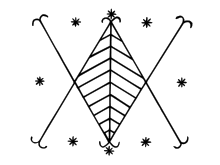
Veve of Ayizan
-
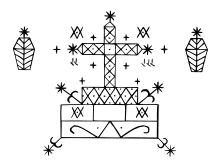
Veve of Baron Samedi
-
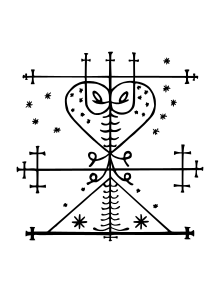
Veve of Maman Brigitte
-
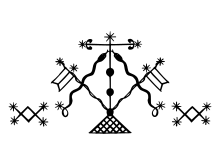
Veve of Damballah Weddo
-
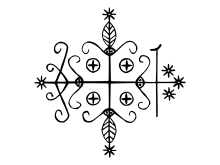
Veve of Papa Legba
-
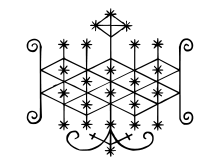
Veve of Ogoun
References
- ↑ Milo Rigaud, Secrets of Voodoo, City Lights, NY, 1969
External links
| ||||||||||||